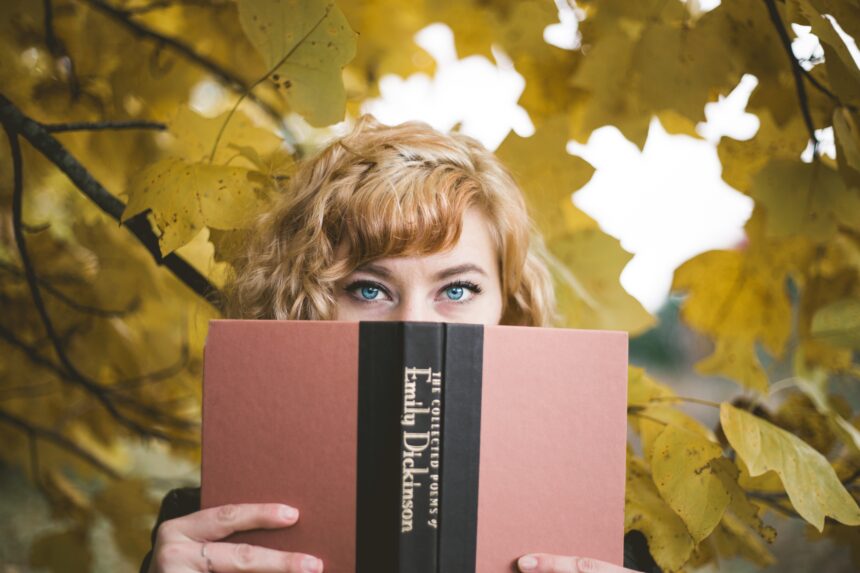Photo by Taylor Wright on Unsplash
Romance has been a beloved genre for people since the beginning of time, whether it was just gossip about who was sleeping with whom, or whether it was some of the greatest love poems, songs, artwork, books, etc, of all time. Within the text, Songs of the Saints of India compiled and written by John Stratton Hawley and Mark Juergensmeyer, some of the poets used the idea of love to portray their devotion and worship towards Hinduism and the gods. One of the sections that stuck out the most for someone like me—a romance novel reviewer—was the section on poems/songs created by Mirabai. While these poems may be seen as erotic, there are some strong metaphors within her poetry, similar to those in Emily Dickinson’s poems. Through both Mirabai and Emily Dickinson’s poetry, audiences can visualize how similar their lives and minds were, even with being from different times and places.
To start off, it is important to understand some of the similarities and differences between Mirabai and Emily Dickinson. First off was when and where they lived. Mirabai was born and lived in India while Dickinson lived her whole life in Amherst, Massachusetts. Along with their contrast in locations, they also lived four centuries apart with Mirabai living during the 15th century and Dickinson living during the 19th century. Despite these differences, there were still similarities in how they chose to live and think.
Both Mirabai and Emily Dickinson fought off the womanhood gender norms of getting married. From Hawley’s text, it is described that Mirabai was opposed to the arranged marriage set up for her because she explained that she was already married to Krishna (125). Similarly, Emily Dickinson was never married but it has been hypothesized that this was due to her attraction to women, particularly her love for her brother’s wife, Susan. Emily writes about her perception of love in some of her poems, including “Wild nights – Wild nights! –.”
Emily Dickinson’s “Wild nights – Wild nights! –” can be compared to Mirabai’s poem number 117. In Mirabai’s poem, she dives into the romanticism of having a god as a lover and the desire to have him. She states “your servant Mira has offered you an offering: her body and her mind,” showing her passion for Krishna and the desire she has for him (Caturvedi, no. 117). Dickinson writes a similarly erotic poem titled “Wild nights – Wild nights! –” where she dives into the imagery of the sea and describes passion and desire. A Poem Analysis article describes this passion writing “some believe that Dickinson spoke about her passion for God, another common theme in her works, rather than sexual love” (Baldwin). This analysis of Dickinson’s poem further shows the connections between Dickinson and Mirabai, particularly through the romanticism of a god along with sexual desire.
Another group of poems to compare by these creators is related to the romanticism of death. Mirabai’s poem number 193 can easily be discussed in unison with Dickinson’s famous “Because I could not stop for Death –” due to the personification and romanticism of death and darkness. Mirabai states “let us go to a realm beyond going, Where death is afraid to go,” which personifies death because of their feeling of being scared (Caturvedi, no. 193). She, later on, romanticizes the darkness by stating that she wanted to “focus on the dark form of the Lord,” also known as Krishna (Caturvedi, no. 193). This is similar to Dickinson’s “Because I could not stop for Death –” because Dickinson famously romanticized falling in love with death and escaping to eternity and immortality with the personified version of death.
To conclude, while Mirabai and Emily Dickinson were from completely different times and places, they still led similar lives and thought very similarly in their poetry/songs. Likewise, both women never had their words published in their lifetimes. Dickinson kept her poetry more private because it was never meant to be published while Mirabai’s words were meant to be spread through the oral tradition of performing. Overall, both women were very similar in their lives and their creations through romanticizing love and death.


Leave a Reply